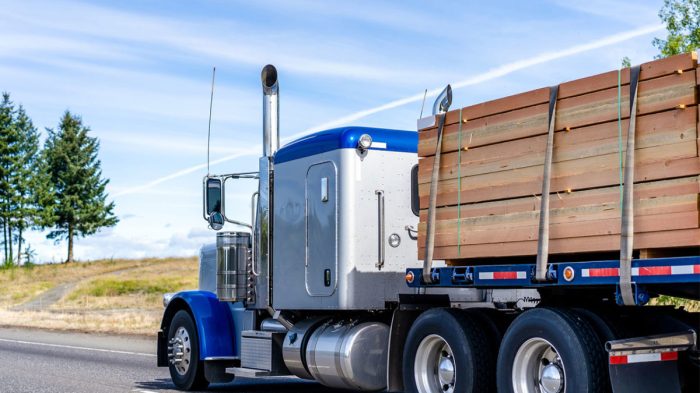Types of Transportation Services

Choosing the right transportation method for building materials is crucial for project efficiency and cost-effectiveness. The selection depends on factors like the type of material, distance to the job site, budget constraints, and the project’s scale. Different methods offer unique advantages and disadvantages, making careful consideration essential.
Common Building Material Transportation Methods
The selection of transportation method significantly impacts project timelines and budgets. The following table summarizes five common methods, highlighting their strengths and weaknesses, and typical applications.
| Method | Advantages | Disadvantages | Typical Use Cases |
|---|---|---|---|
| Over-the-Road Trucking | High accessibility, flexible scheduling, relatively fast for shorter distances. | Higher cost per unit for long distances, susceptible to traffic delays, limited load capacity compared to rail or barge. | Delivery of smaller to medium-sized loads to nearby job sites; just-in-time delivery of critical materials. |
| Rail Transport | High capacity, cost-effective for long distances, suitable for large volumes of materials. | Requires access to rail lines, slower delivery times than trucking, less flexible scheduling. | Transporting large quantities of aggregates, cement, steel, and lumber over long distances for large-scale construction projects. |
| Barge Transportation | Very high capacity, cost-effective for long distances, especially for bulky materials. | Limited accessibility, slow transit times, dependent on waterways and weather conditions. | Transporting heavy aggregates, cement, and large prefabricated components over long distances via rivers or canals. |
| Specialized Heavy Haul Trucking | Can transport oversized and heavy loads that cannot be transported by standard trucks. | High cost, requires specialized permits and escorts, slower transit times. | Transporting large prefabricated building sections, heavy steel beams, and oversized equipment. |
| Intermodal Transportation | Combines the advantages of different modes (e.g., rail and trucking), maximizing efficiency and cost-effectiveness. | Requires careful planning and coordination between different transportation providers. | Moving large quantities of materials long distances, often involving rail transport for long hauls and trucking for final delivery. |
Over-the-Road Trucking, Rail Transport, and Barge Transportation Comparison for Large-Scale Projects
For large-scale projects, the choice between over-the-road trucking, rail transport, and barge transportation involves a careful assessment of cost, speed, and capacity. Over-the-road trucking offers flexibility and speed for shorter distances but becomes less economical for large volumes and long distances. Rail transport excels in moving massive quantities efficiently over long distances, but its inflexibility and slower speed need consideration.
Barge transportation offers the highest capacity and is often the most cost-effective for extremely long distances and bulky materials, but its dependence on waterways and slower speed must be factored in. The optimal solution often involves a combination of these methods, leveraging the strengths of each. For example, a large project might use rail transport for bulk materials from a distant quarry and trucking for final-mile delivery to the construction site.
Specialized Equipment for Oversized or Heavy Building Materials
Transporting oversized or heavy building materials requires specialized equipment and expertise. This often includes heavy-haul trucks with multiple axles and enhanced suspension systems to distribute the weight evenly. Lowboy trailers, which have a low deck height, are commonly used to accommodate extremely tall or wide loads. For exceptionally heavy loads, specialized cranes and rigging equipment might be necessary for loading and unloading.
Furthermore, pilot vehicles and police escorts are frequently required to ensure safe transportation on public roads, particularly for oversized loads that exceed standard road dimensions. The transport of prefabricated wall sections, for instance, might necessitate the use of a heavy-duty lowboy trailer and a crane for precise placement. Similarly, moving large steel beams would necessitate the use of specialized beam-carrying trailers and potentially a crane for lifting and securing the load.
